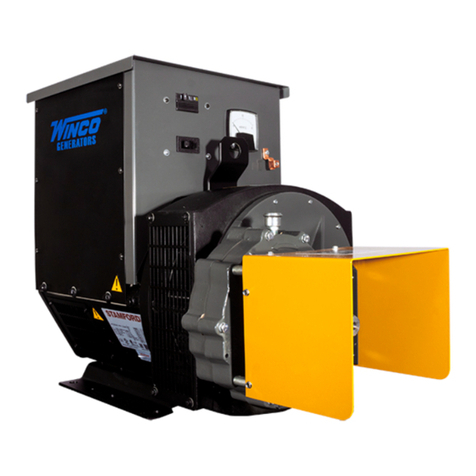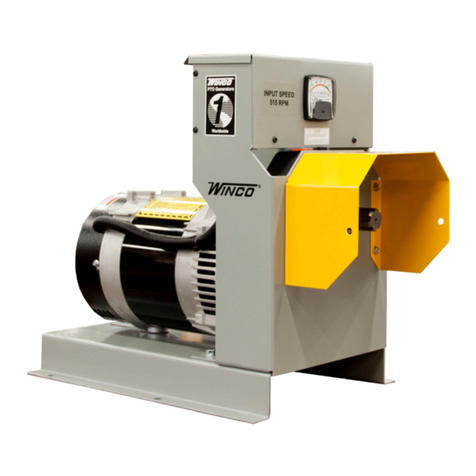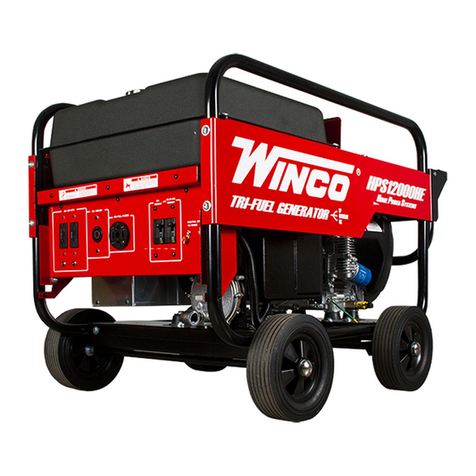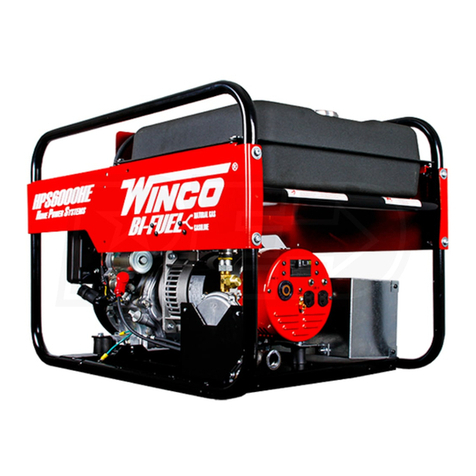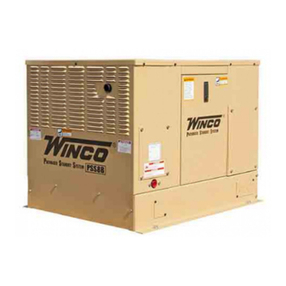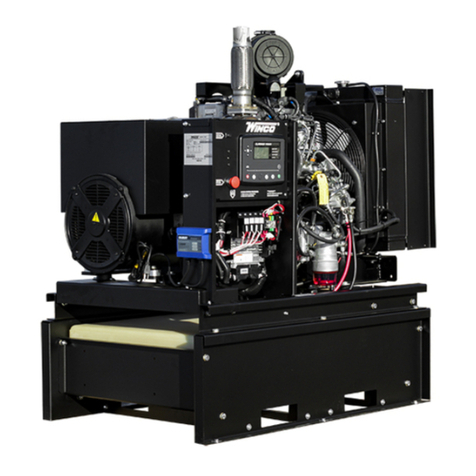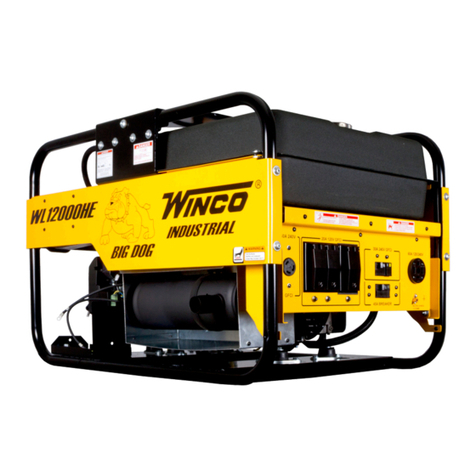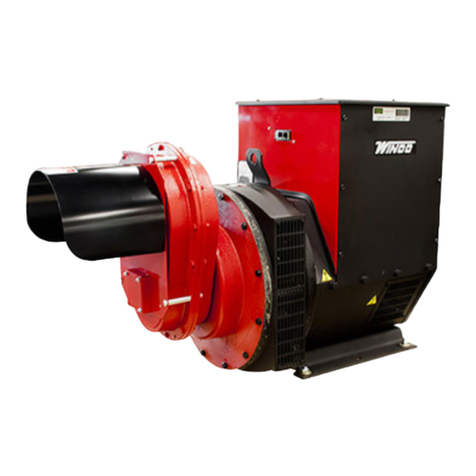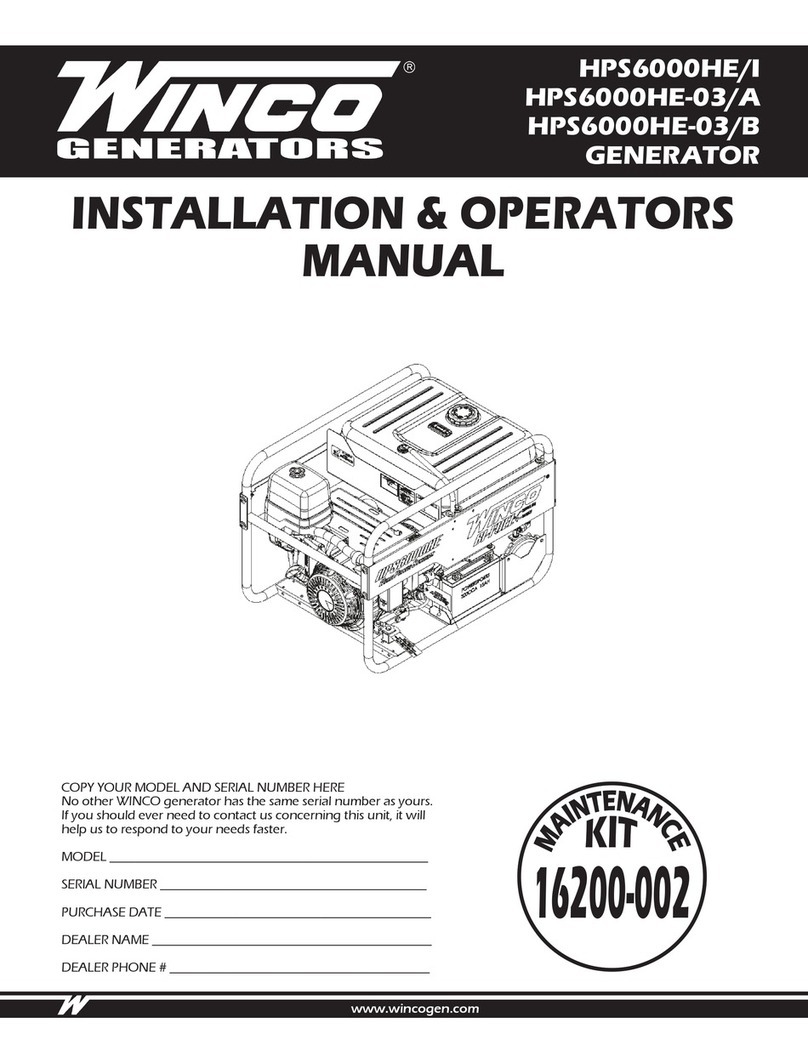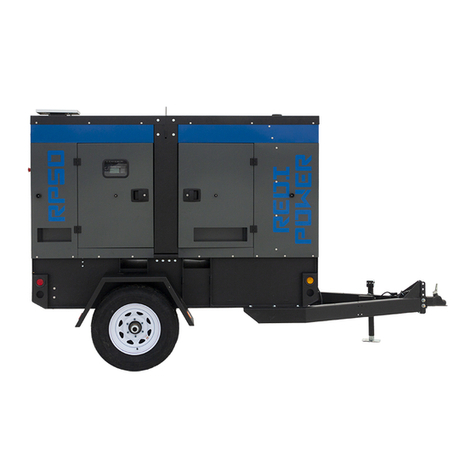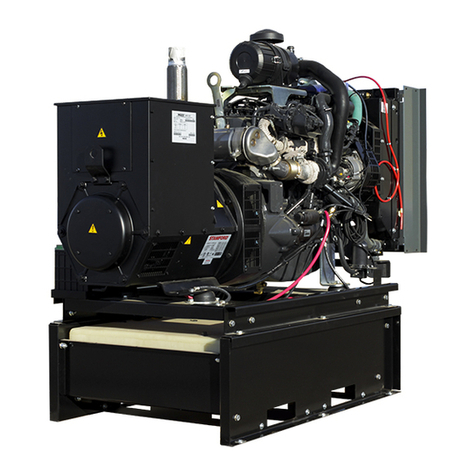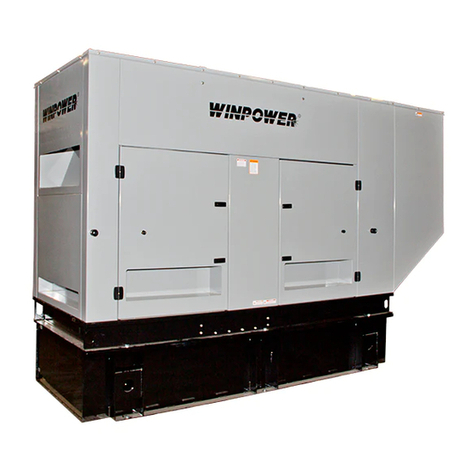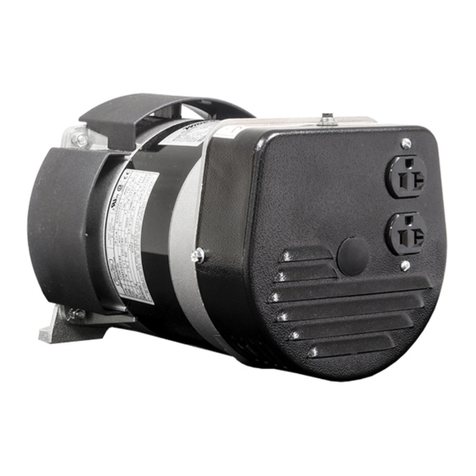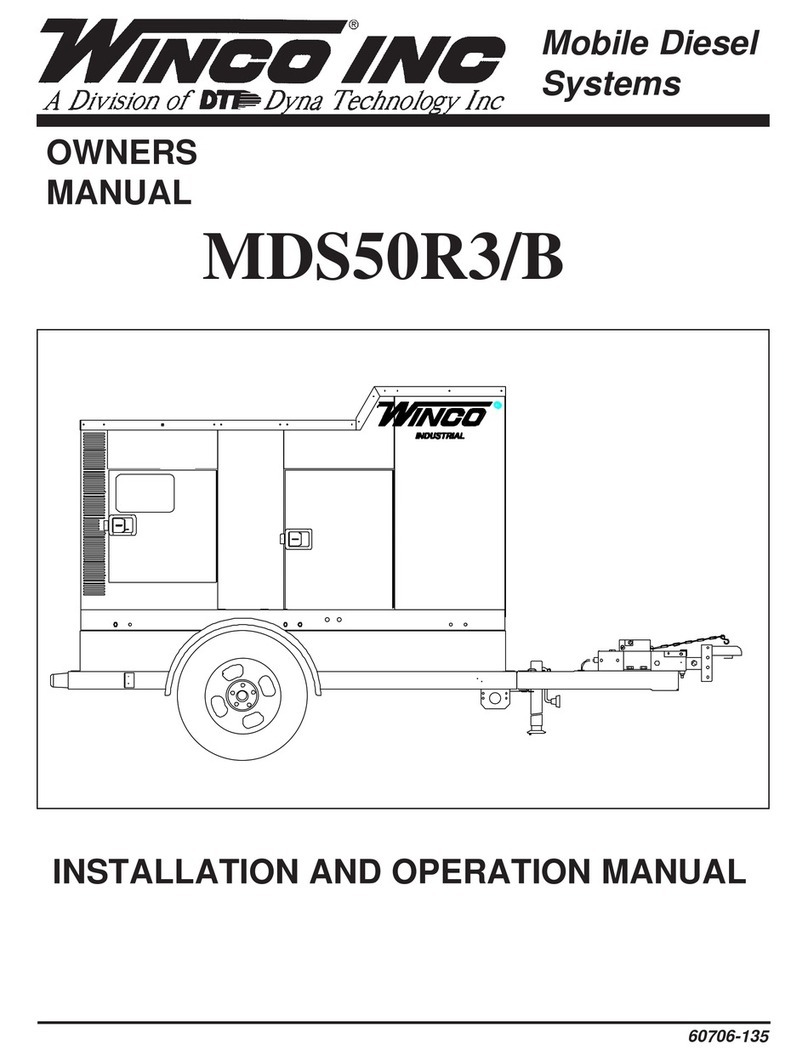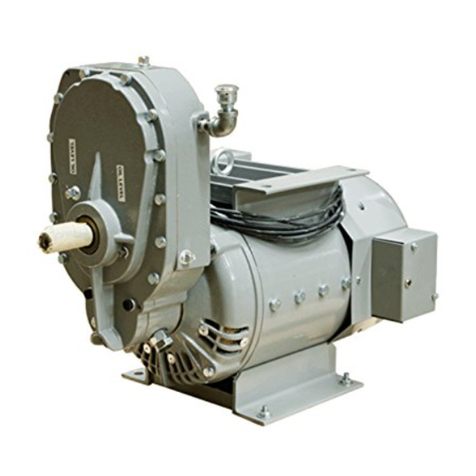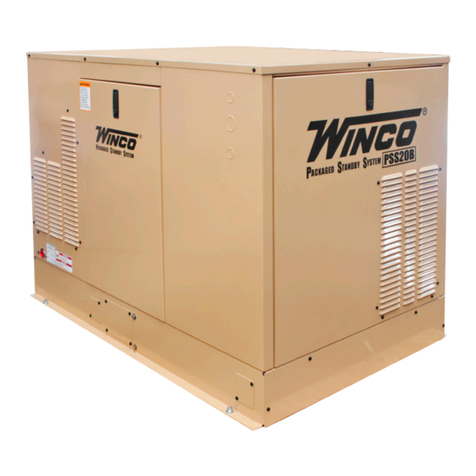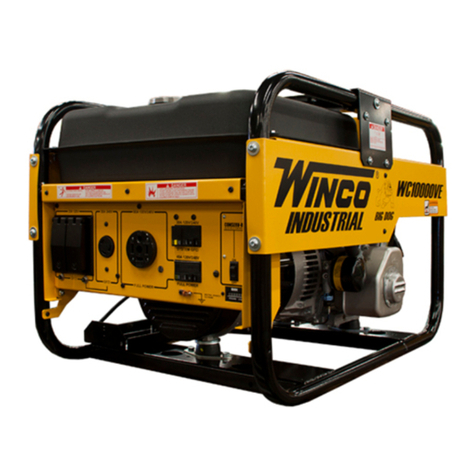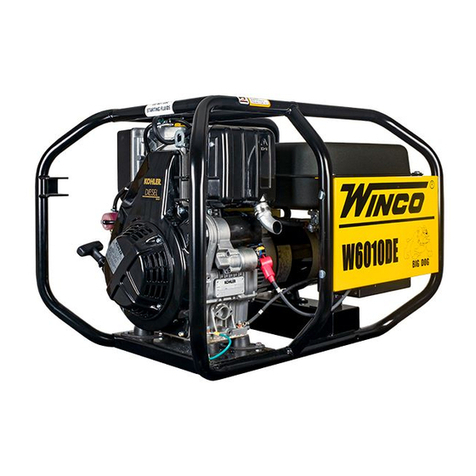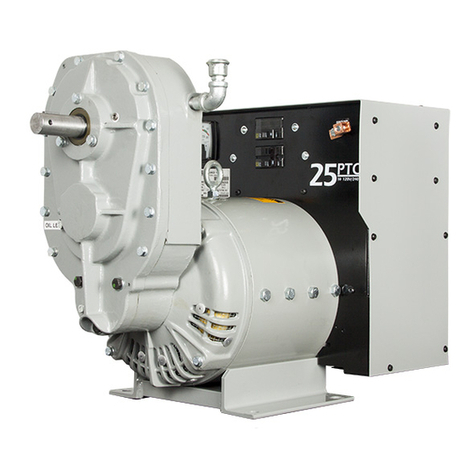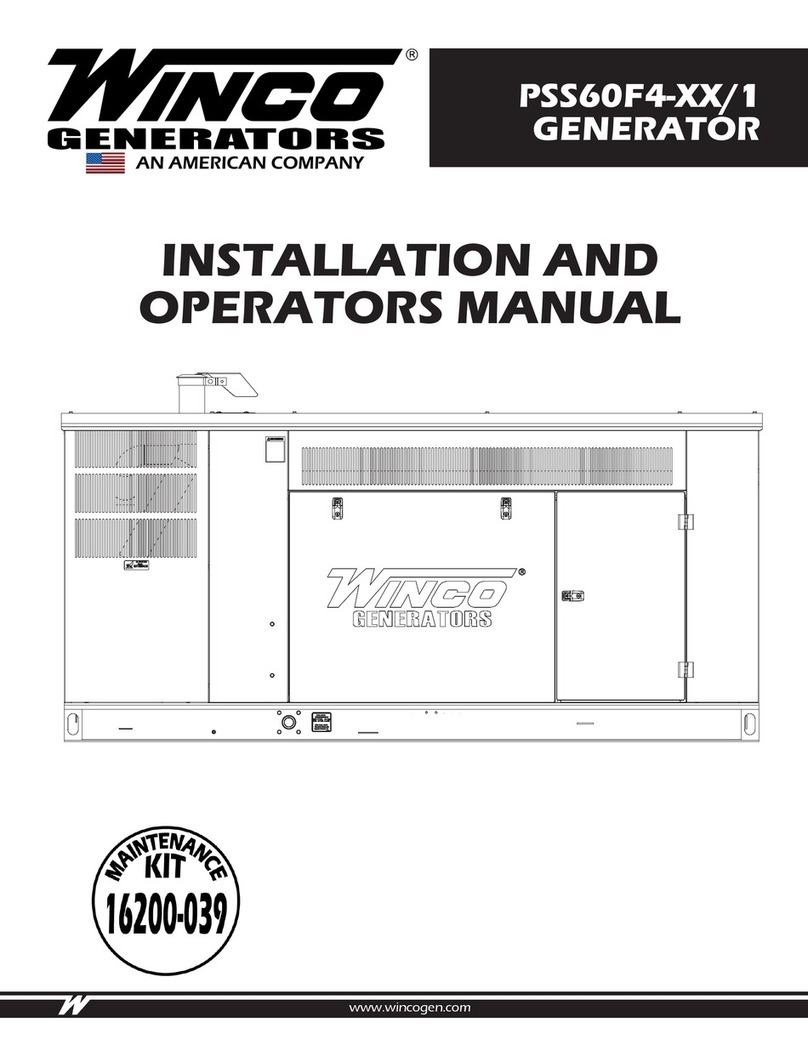
9OPM-133/F
BATTERY INSTALLATION
This engine generator set is shipped with a battery tie down
for customer installation.
A customer supplied 12 Volt battery, BCI group U1 rated
at 300 CCA or larger is recommended for this electric start
engine-generator set. Follow the battery manufacturers
recommendations for servicing and charging prior to use.
Connect the battery to the electric start system using the
cables provided.
Installation and servicing of batteries must be performed or
supervised only by personnel knowledgeable of batteries
and the required precautions. Keep unauthorized personnel
away from batteries.
When installing or replacing batteries, use proper group/
size starting battery. The battery should be a maintenance
free lead acidic design. Deep cycle batteries will NOT work
for this application.
CAUTION: EQUIPMENT DAMAGE
These electric start engines are NEGATIVE GROUND. Use
extreme caution when connecting the battery. Connect
the NEGATIVE battery terminal to GROUND.
For your safety, always connect the positive battery cable to
the “bat+” terminal first. Then connect the negative battery
cable to the “Bat-” terminal. Make sure all connections are
clean an tight. Reverse the sequence when disconnecting,
disconnect the negative cable first. These engines produce
enough direct current to keep the battery charged under
normal operating conditions, but were not intended to be
used as a battery charger.
WARNING: PERSONAL INJURY
Lead acid batteries produce explosive hydrogen gas when
charging. Keep sparks, flames, and burning cigarettes
away from the battery. Ventilate the area when charging
or using the battery in an enclosed space. Lead acid
batteries contain sulfuric acid, which causes severe burns.
If acid contacts eyes, skin, or clothing, flush well with
water. For contact with the eyes, get immediate medical
attention.
CAUTION
Do NOT open or mutilate the battery. Released electrolyte
is known to be harmful to the skin and eyes and to be very
toxic. A battery presents a risk of electrical shock and high
short circuit current. The following precautions must be
observed when working with batteries:
1. Remove watches, rings and other metal objects.
2. Use tools with insulated handles.
3. Check both the battery cable ends and the battery
posts to be sure they are free of corrosion.
4. Always connect the battery positive first and then
connect the battery negative cable. When removing
the battery cables from the battery reverse the
procedure, disconnect the negative cable first and
then the positive cable.
5. Be sure all connections are tight and coat the
terminals and cable end with dialectic grease.
DANGER: EXPLOSIVE FIRE RISK
Never smoke when near batteries. Do not cause a flame or
spark in the battery area. Always discharge static electricity
from your body before touching batteries by first touching
a ground metal surface.
WARNING
The electrolyte is diluted sulfuric acid that is harmful to the
skin and eyes. It is electrically conductive and corrosive.
The following precautions must be always be taken.
1. Always wear full eye protection and protective
clothing.
2. Where electrolyte contacts skin, wash off immediately
with water.
3. If electrolyte contacts the eyes, flush thoroughly and
immediately with water and seek immediate medical
attention.
4. Spilled electrolyte is to be washed down with an acid
neutralizing agent. A common practice is to use a
solution of one pound of bicarbonate of soda (baking
soda) to one gallon of water. The bicarbonate of soda
solution is to be added until the evidence of reaction,
foaming, has ceased. The resulting liquid is to be
flushed water and the area dried.
SERVICING BATTERIES
Batteries used on these units may over time lose water.
This is especially true if you are using a trickle charger to
maintain your battery. When refilling the battery with water
use only distilled water. Tap water will shorten the service
life of the battery.
Never fill the battery above the fill line. Overfilling above
the upper level line may cause the electrolyte to overflow,
resulting in corrosion to the engine or nearby parts.
Immediately wash off any spilled electrolyte following the
procedure above.
Note: always make sure that a new battery is fully charged
before installing it on a generator set.
All connections must be clean and tight. Check the
electrolyte (fluid) in the battery periodically to be sure it is
above the plates. Never allow the battery to remain in a
discharged condition.
BATTERY CHARGING
Units have a small flywheel charger built into the engine
flywheel assembly for recharging the starting battery. This
flywheel charger generates a small AC current that passes
through a diode assembly to produce DC charging current
of about 1 to 3 amps. This circuit is not designed to be used
as a battery charging circuit to recharge dead batteries.

